Tourism Park
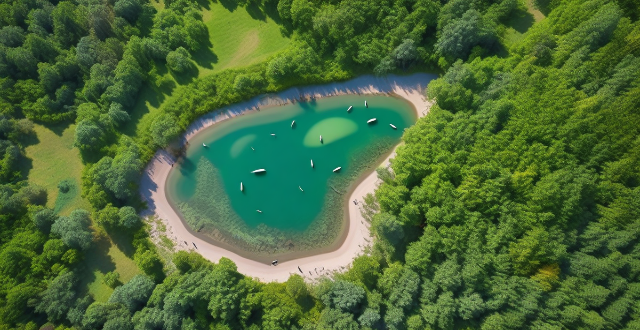
What are some popular eco-tourism destinations around the world ?
Eco-tourism is a form of tourism that focuses on conserving the environment and improving the well-being of local communities. Some popular eco-tourism destinations around the world include Costa Rica, New Zealand, Galapagos Islands, Iceland, and Borneo. In Costa Rica, visitors can enjoy bird watching, hiking in national parks, visiting turtle nesting sites, and surfing and snorkeling in the Pacific Ocean. In New Zealand, visitors can visit glaciers and fiords, trek through national parks, watch whales and dolphins in the Bay of Islands, and participate in Maori cultural experiences. The Galapagos Islands offer snorkeling with sea lions and marine iguanas, watching giant tortoises and land iguanas in their natural habitat, hiking through volcanic landscapes, and visiting research stations and learning about conservation efforts. Iceland offers watching the Northern Lights, hiking through national parks and nature reserves, visiting geothermal areas and bathing in natural hot springs, and whale watching tours in the Atlantic Ocean. Finally, Borneo offers visiting orangutan sanctuaries and rehabilitation centers, trekking through rainforests and visiting caves, river cruising and exploring mangrove forests, and visiting traditional villages and experiencing local culture.

What are some successful examples of ecological protection areas around the world ?
Ecological protection areas play a crucial role in preserving biodiversity, maintaining ecosystem services, and protecting natural landscapes. Successful examples include the Great Barrier Reef Marine Park in Australia, Yellowstone National Park in the United States, Galapagos National Park in Ecuador, Banff National Park in Canada, and Sian Ka'an Biosphere Reserve in Mexico. These areas have implemented various management strategies such as zoning systems, reintroducing wolves, controlling invasive species, promoting sustainable tourism practices, involving local communities in conservation efforts, and restoring degraded areas.

How does food tourism impact local economies and cultures ?
Food tourism, also known as culinary or gastronomy tourism, has significant impacts on local economies and cultures. Economic benefits include job creation, increased revenue for local businesses, tourism diversification, infrastructure development, and value addition to local products. Culturally, food tourism promotes the preservation of traditions, cultural exchange, heritage promotion, adaptation and innovation, and community engagement. However, there are potential downsides such as overcommercialization, resource depletion, and pricing issues that require careful management to ensure authenticity and sustainability.
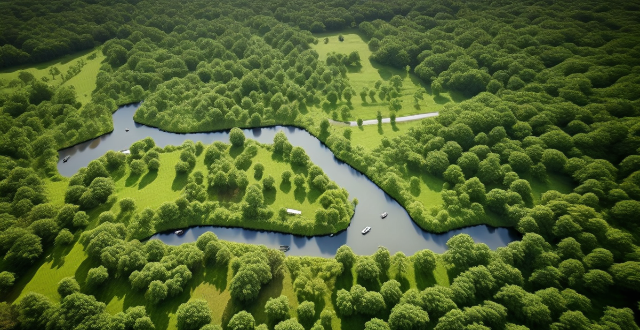
How does eco-tourism impact local communities ?
Eco-tourism, a form of sustainable tourism, focuses on responsible travel to natural areas that conserves the environment and improves the well-being of local people. It has a positive impact on local communities in various ways, including economic benefits such as job creation, income generation, infrastructure development, and foreign exchange earnings. Eco-tourism also promotes environmental conservation by encouraging sustainable practices among local communities, such as habitat protection, wildlife conservation, and education on sustainable practices. Additionally, it helps preserve cultural heritage by showcasing local traditions, customs, and way of life, as well as promoting cultural exchange and artisan development. Finally, eco-tourism contributes to social development by improving healthcare access, creating education opportunities, promoting gender equality, and empowering local communities through involvement in decision-making processes related to tourism development and management.

What are some examples of negative impacts of tourism on the environment ?
Tourism can have negative impacts on the environment, including destruction of natural habitats, pollution, overuse of resources, cultural impacts, physical degradation, and contributing to climate change. It is important to manage tourism sustainably to minimize these effects and preserve the planet's natural beauty for future generations.

How does eco-tourism contribute to conservation efforts ?
Eco-tourism, or ecological tourism, plays a crucial role in conservation efforts by fostering sustainable practices and raising awareness about the importance of preserving biodiversity and ecosystems. It contributes to conservation in several ways: 1. **Raising Environmental Awareness**: Informed decision-making and behavior changes support conservation goals through educational opportunities provided during eco-tourism experiences. 2. **Direct Conservation Funding**: Fees for park entry, donations to local conservation groups, and investments in infrastructure that benefits both tourists and wildlife directly fund conservation projects. 3. **Encouraging Sustainable Practices**: By promoting eco-friendly transportation, recycling, composting, and community involvement in sustainable practices, eco-tourism reduces the overall environmental footprint of tourism activities. 4. **Supporting Local Economies**: Eco-tourism supports local economies, creating an incentive for communities to protect their natural resources as they rely on them for income. 5. **Protecting Habitats and Biodiversity**: Attracting visitors to protected areas or regions where conservation is a priority helps maintain healthy ecosystems and diverse wildlife populations. Overall, eco-tourism demonstrates that tourism can be a force for good when it operates with a focus on ecological sustainability and community involvement.

What is the future of space tourism and its implications on Earth's resources ?
The development of space tourism by private companies like SpaceX, Blue Origin, and Virgin Galactic may make it more accessible to the public in the future. However, it raises concerns about its environmental impact, economic considerations, ethical concerns, and long-term sustainability. It is crucial to consider these implications to ensure responsible use of Earth's resources while exploring space tourism.

How do food festivals impact tourism in a region ?
Food festivals significantly impact tourism in a region, offering economic benefits and promoting cultural exchange. They attract visitors, boost spending, create jobs, and support local businesses. Culinary diversity, community engagement, and media exposure enhance the region's brand image. Sustainability is crucial for supporting local farmers and managing waste. Successful examples include tomato, wine & cheese, and seafood festivals. Food festivals are powerful tools for driving tourism and enriching the travel experience.

What strategies can low-income countries adopt to attract more tourists and boost their tourism industry ?
Low-income countries face challenges in attracting tourists due to limited infrastructure and resources, but can boost their tourism industry by developing infrastructure, promoting local culture, offering affordable packages, focusing on sustainable tourism, partnering with agencies, and improving safety.

What are the safety measures taken for space tourism ?
Space tourism requires rigorous safety measures, including physical trainingSpace tourism requires rigorous safety measures, including physical trainingancy, medical screenings, including physical training, spacecraft redundancy, medical screenings, and reliable communication systems.
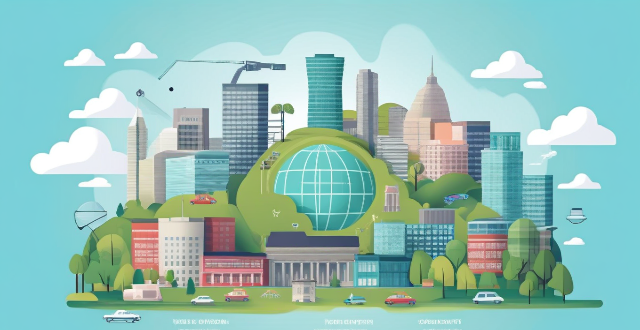
How is the tourism industry adapting to climate change-related risks and opportunities ?
The tourism industry, a significant contributor to the global economy, has been profoundly affected by climate change. The sector is now compelled to adapt to the associated risks and opportunities in various ways, including developing disaster management plans, building more resilient infrastructure, promoting sustainable tourism practices, diversifying offerings to attract tourists throughout the year, adopting green initiatives, developing nature-based tourism activities, creating wellness retreats, and providing educational programs about the connection between climate change and health. By implementing innovative solutions and embracing sustainability, the sector aims to mitigate the negative impacts of climate change and ensure its long-term viability.

How can I find local experience activities that support sustainable tourism ?
Finding local experience activities that support sustainable tourism is crucial for travelers who want to make a positive impact on the communities they visit. Here's how to do it: 1. **Research Online**: Use sustainable travel portals like Responsible Travel and Green Globe, and check local tourism boards and conservation groups for eco-friendly activities. 2. **Social Media and Forums**: Join travel communities on Facebook and Reddit, and follow influencers and bloggers who focus on sustainable travel for recommendations. 3. **Local Guidebooks and Magazines**: Look for specialized publications like "The Sustainable Travel Handbook" and local magazines featuring eco-friendly activities. 4. **Directly Contact Local Businesses**: Reach out to eco-friendly accommodations like eco-lodges and farm stays, and inquire at local restaurants, especially those focusing on farm-to-table or vegetarian options. 5. **Attend Local Events and Fairs**: Participate in environmental festivals and cultural fairs, and visit farmers markets and artisan markets for insights into sustainable activities. 6. **Use Mobile Applications**: Download apps like EcoCompanion and Book Different to find unique and sustainable accommodations and activities. 7. **Work with Local Guides**: Hire sustainable tour guides and participate in community-based tours that support local economies and conservation efforts. By employing these strategies, you can ensure your travels not only enrich your personal experiences but also contribute positively to the environment and local communities, promoting sustainable tourism practices.

How will commercial space tourism change the way we view Earth and space ?
The advent of commercial space tourism is set to revolutionize our understanding of both Earth and space by making space travel more accessible. It allows us to view our planet from a different perspective, fostering a greater sense of global awareness and interconnectedness, as well as an appreciation for the fragility and beauty of our planet. Additionally, it provides the opportunity for people to experience space firsthand, leading to a deeper understanding of the challenges and opportunities presented by space exploration, renewed interest in science and technology, and increased demand for education in STEM fields. Overall, commercial space tourism has the potential to change the way we view Earth and space by providing unique perspectives and experiences that can help us better appreciate our planet and expand our understanding of the universe beyond.
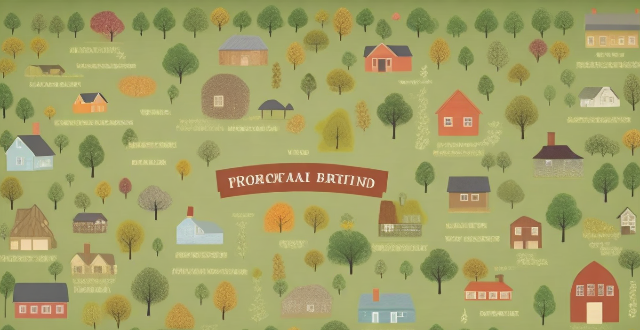
What are the most affordable domestic travel destinations ?
The text provides a summary of the most affordable domestic travel destinations, highlighting four main categories: national parks, small towns and villages, off-season destinations, and budget-friendly cities. Each category offers unique advantages such as natural beauty, authentic experiences, lower prices, and free attractions. Examples are given for each category, including Yellowstone National Park in the U.S., Sedona, Arizona, Florida during summer, Budapest, Hungary, and more. The text concludes by encouraging readers to explore these options for an unforgettable journey without breaking the bank.
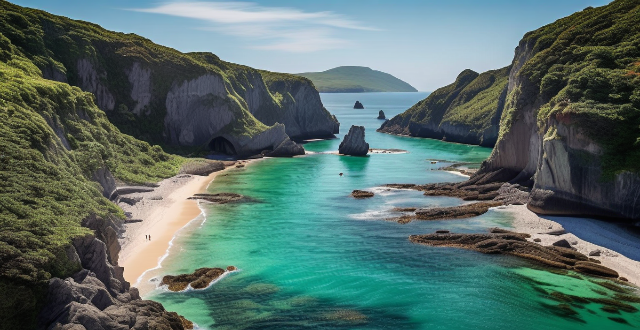
What role do ecological protection areas play in sustainable tourism development ?
Ecological protection areas are vital for sustainable tourism, conserving resources and biodiversity while offering unique experiences to visitors. They also provide educational opportunities and support local livelihoods, promoting long-term sustainability and planetary health.

What are the best domestic travel destinations for families with children ?
The best domestic travel destinations for families with children include Walt Disney World Resort in Florida, Yellowstone National Park in Wyoming, San Diego in California, Washington D.C., New York City, Grand Canyon National Park in Arizona, Hawaiian Islands, and Great Smoky Mountains National Park in Tennessee/North Carolina. These locations offer a variety of activities and experiences that cater to different age groups and preferences, ensuring that there's something special for everyone in the family.

What are some examples of successful projects that combine climate action with sustainable development ?
Successful projects that combine climate action with sustainable development often involve the use of renewable energy sources, green infrastructure, agroforestry systems, eco-tourism initiatives, waste management strategies, and water conservation efforts. These initiatives not only mitigate the effects of climate change but also promote economic growth, social inclusion, and environmental protection. Examples include solar power plants in India, gardens by the bay in Singapore, shade-grown coffee farming in Ethiopia, community-based tourism in Costa Rica, recycling infrastructure in Germany, and desalination and water recycling in Israel. These projects demonstrate that addressing one does not have to come at the expense of the other and can be mutually reinforcing goals.

How do sports tourism and mega-events shape the urban landscape and infrastructure ?
Sports tourism and mega-events significantly impact the urban landscape and infrastructure, driving developments in sports facilities, public spaces, urban renewal projects, transportation systems, accommodation facilities, and utility services. These events also raise environmental concerns, prompting host cities to implement sustainable practices. Balancing these developments with environmental considerations is crucial for creating lasting legacies that benefit both current residents and future generations.

What are the best domestic travel destinations for nature lovers ?
Nature lovers are always in search of destinations that offer them the chance to explore, relax and connect with nature. Here are some of the best domestic travel destinations for nature lovers: 1. The Great Smoky Mountains National Park, Tennessee/North Carolina 2. Acadia National Park, Maine 3. Glacier National Park, Montana 4. Grand Canyon National Park, Arizona

What are some of the most popular national parks for outdoor exploration in the US ?
The United States is home to a vast array of national parks that offer incredible opportunities for outdoor exploration. Here are some of the most popular ones: 1. Yellowstone National Park in Wyoming, Montana, and Idaho features geysers, hot springs, wildlife viewing, hiking, camping, and fishing. 2. Yosemite National Park in California boasts waterfalls, granite cliffs, hiking trails, and scenic drives. 3. Grand Canyon National Park in Arizona offers hiking, camping, mule rides, and breathtaking views of the canyon. 4. Zion National Park in Utah has red rock formations, hiking trails, camping, and scenic drives. 5. Rocky Mountain National Park in Colorado features mountain peaks, hiking trails, wildlife viewing, and scenic drives. 6. Acadia National Park in Maine offers coastal scenery, hiking trails, carriage roads, and historic sites. 7. Glacier National Park in Montana has mountain peaks, glaciers, hiking trails, and wildlife viewing. 8. Joshua Tree National Park in California features desert landscapes, hiking trails, rock climbing, and stargazing. 9. Shenandoah National Park in Virginia boasts mountain scenery, hiking trails, wildlife viewing, and scenic drives. 10. Arches National Park in Utah has natural sandstone arches, hiking trails, rock climbing, and scenic drives.

What are the benefits of eco-tourism ?
Eco-tourism, also known as ecological tourism or sustainable tourism, has become increasingly popular in recent years. It involves visiting natural areas to experience and appreciate the environment without causing any harm to it. Here are some of the benefits of eco-tourism: 1. Environmental Benefits: - Conservation of Natural Resources: Eco-tourism promotes the conservation and preservation of natural resources such as forests, wildlife, and water bodies. This helps to maintain a healthy ecosystem for future generations. - Reduction in Carbon Footprint: Eco-tourism encourages travelers to use eco-friendly transportation methods like walking, cycling, or public transport. This reduces carbon emissions and helps combat climate change. - Protection of Endangered Species: By promoting eco-tourism, we can protect endangered species from poaching and hunting. This helps to maintain biodiversity and preserve rare animals and plants. - Promotion of Sustainable Practices: Eco-tourism promotes sustainable practices among local communities, such as using renewable energy sources, reducing waste, and conserving water. 2. Economic Benefits: - Job Creation: Eco-tourism creates job opportunities for local people, especially those who have limited access to formal education and training. This helps to reduce poverty and improve living standards in rural areas. - Income Generation: Eco-tourism generates income for local communities through activities like guided tours, accommodation services, and sale of handicrafts made from locally sourced materials. - Diversification of Economy: Eco-tourism helps to diversify the economy by providing an alternative source of revenue for local communities. This reduces their dependence on traditional livelihoods like farming and fishing. 3. Social Benefits: - Cultural Exchange: Eco-tourism provides an opportunity for cultural exchange between tourists and local communities. This helps to promote understanding and appreciation of different cultures and traditions. - Educational Opportunities: Eco-tourism offers educational opportunities for both tourists and local communities. Tourists learn about the environment, wildlife, and cultural heritage, while local communities gain knowledge about sustainable practices and environmental conservation. - Community Empowerment: Eco-tourism empowers local communities by giving them a voice in decision-making processes related to tourism development. This helps to ensure that tourism activities align with their needs and priorities. - Enhanced Quality of Life: Eco-tourism enhances the quality of life for local communities by improving infrastructure facilities like roads, healthcare centers, and schools. This leads to better living conditions and improved well-being.

What are the best places to visit in Asia for nature lovers ?
Asia is a continent with diverse landscapes and natural wonders that offer an incredible experience for nature lovers. Here are some of the best places to visit in Asia for nature lovers: The Himalayas in Nepal is a paradise for trekkers and mountaineers. It is home to eight of the world's fourteen highest mountains, including Mount Everest. The region offers breathtaking views of snow-capped peaks, lush valleys, and cascading waterfalls. Some popular treks include the Annapurna Circuit, Langtang Valley Trek, and Everest Base Camp Trek. Yangshuo is a small town located in Guangxi Province, China. It is known for its stunning limestone karst formations, crystal-clear rivers, and picturesque countryside. Visitors can take a bamboo boat ride on the Li River, cycle through the countryside, or hike to the top of Moon Hill for panoramic views of the surrounding landscape. Bali is an island paradise in Indonesia that offers a unique blend of culture, beaches, and nature. It is home to several volcanic mountains, such as Mount Batur and Mount Agung, which offer challenging hikes with rewarding views. The island also has numerous rice terraces, waterfalls, and coral reefs that are perfect for snorkeling and diving. Jeju Island is a volcanic island off the southern coast of South Korea that is known for its beautiful beaches, hiking trails, and scenic landscapes. The island has several natural attractions, including Manjanggul Lava Tube, Cheonjiyeon Waterfall, and Hallasan Mountain, the highest peak in South Korea. Phong Nha-Ke Bang National Park is a UNESCO World Heritage Site located in central Vietnam. It is home to the largest cave in the world, Son Doong Cave, and several other impressive cave systems. The park also has lush forests, limestone mountains, and underground rivers that are perfect for kayaking and caving adventures. Zhangjiajie National Forest Park is located in Hunan Province, China. It is known for its towering sandstone pillars and steep cliffs that resemble those found in Avatar movie. The park also has several hiking trails, scenic viewpoints, and natural bridges that offer breathtaking views of the surrounding landscape. Khao Yai National Park is Thailand's third largest national park and a UNESCO World Heritage Site. It is home to diverse wildlife, including elephants, tigers, and gibbons. The park also has several hiking trails, waterfalls, and scenic viewpoints that offer stunning views of the surrounding landscape. Kinabalu Park is located on the island of Borneo in Malaysia. It is home to Mount Kinabalu, the highest peak in Southeast Asia. The park also has several hiking trails, including the challenging climb to the summit of Mount Kinabalu. Along the way, visitors can enjoy stunning views of the surrounding rainforest and wildlife.

What are the most scenic routes for a road trip in the US ?
The United States is home to some of the most breathtaking landscapes in the world, making it an ideal destination for a road trip. Here are some of the most scenic routes you can take: 1. Pacific Coast Highway (California) - This iconic drive takes you along the coastline of California, offering stunning views of the ocean and rugged cliffs. Highlights include Big Sur, San Francisco, and Los Angeles. 2. Blue Ridge Parkway (Virginia/North Carolina) - A 469-mile scenic drive that winds through the Appalachian Mountains, taking you through lush forests, rolling hills, and charming small towns. Highlights include Shenandoah National Park, Asheville, and Great Smoky Mountains National Park. 3. Going-to-the-Sun Road (Montana) - A 52-mile scenic drive through Glacier National Park in Montana, taking you through snow-capped mountains, alpine meadows, and crystal-clear lakes. Highlights include Lake McDonald, Logan Pass, and St. Mary Lake. 4. Hana Highway (Hawaii) - A 52-mile winding road that runs along the coastline of Maui in Hawaii, taking you through tropical rainforests, cascading waterfalls, and black sand beaches. Highlights include Wailuku Falls, Hana Town, and Waianapanapa State Park.

What are some underrated destinations for landscape photography ?
Landscape photography enthusiasts should consider exploring underrated destinations like Cappadocia, Zhangjiajie National Forest Park, Norway's fjords, the Atacama Desert, Plitvice Lakes National Park, the Great Ocean Road, and Patagonia for unique and breathtaking landscapes. These places offer surreal rock formations, mystical mountains, stunning fjords, otherworldly desert landscapes, cascading waterfalls, iconic coastal views, and majestic mountain ranges. Exploring these lesser-known destinations can lead to hidden gems and create stunning works of art that showcase the beauty of our planet.

Can sports tourism be made more sustainable ?
To make sports tourism more sustainable, strategies can beTo make sports tourism more sustainable, strategies can be: environmental sustainability, social sustainability strategies can be employed in three main areas: environmental sustainability, social sustainability, and economic sustainability. For environmental sustainability, reducing the carbon footprint through flight offsetting and promoting public transportation, building green venues with eco-friendly design and waste management plans, and conserving water through rainwater harvesting and water-efficient fixtures are recommended. For social sustainability, engaging local communities in event planning, ensuring accessibility and inclusivity, and promoting cultural exchange are important. Economic sustainability can be achieved by supporting local economies through local procurement and job creation, adhering to fair wages and working conditions, and investing in long-term legacy planning. Additionally, promoting sustainable practices through education and awareness, partnerships with NGOs, and encouraging sponsors and partners to adopt sustainable practices as part of their corporate social responsibility initiatives can further enhance the sustainability of sports tourism.

How does tourism impact local communities around heritage sites ?
Tourism has become an essential part of the global economy, and its impact on local communities around heritage sites is significant. The following sections will discuss the positive and negative effects of tourism on these communities. ## Positive Effects ### Economic Benefits 1. **Job Creation**: Tourism creates job opportunities for locals, such as tour guides, hotel staff, and restaurant workers. 2. **Income Generation**: Tourists spend money on local products and services, which boosts the economy. 3. **Infrastructure Development**: Improved roads, transportation systems, and communication networks are often developed to accommodate tourists. ### Cultural Preservation 1. **Heritage Conservation**: Tourism revenue can be used to preserve and maintain heritage sites. 2. **Cultural Exchange**: Interaction with tourists promotes cultural exchange and understanding. 3. **Traditional Arts and Crafts**: Tourists often purchase traditional arts and crafts, encouraging their preservation and promotion. ### Environmental Awareness 1. **Eco-Tourism**: Some tourists are interested in eco-friendly activities, promoting sustainable tourism practices. 2. **Conservation Efforts**: Tourism revenue can fund environmental conservation projects near heritage sites. ## Negative Effects ### Environmental Degradation 1. **Overcrowding**: Large numbers of tourists can lead to overcrowding and damage to fragile ecosystems. 2. **Pollution**: Increased traffic and waste production can contribute to pollution issues. 3. **Resource Depletion**: Overuse of resources like water and energy can strain local supplies. ### Cultural Disruption 1. **Commercialization**: The focus on tourism can lead to the commercialization of cultural experiences, diluting their authenticity. 2. **Loss of Traditions**: As locals adapt to tourist demands, some traditions may be lost or altered. 3. **Cultural Sensitivity Issues**: Tourists may not always respect local customs and practices, leading to tensions. ### Economic Disparities 1. **Leakage of Revenue**: Not all tourism revenue stays within the local community, especially if managed by external corporations. 2. **Unequal Distribution**: Benefits from tourism may not be evenly distributed among all members of the community. 3. **Dependency on Tourism**: Over-reliance on tourism can make local economies vulnerable to fluctuations in tourist numbers. ## Conclusion The impact of tourism on local communities around heritage sites is complex, with both positive and negative aspects. It is crucial for stakeholders to manage tourism responsibly to maximize benefits while minimizing harm to the environment, culture, and economy of these communities. By fostering sustainable tourism practices, we can ensure that future generations can also enjoy these valuable heritage sites and the unique cultures they represent.
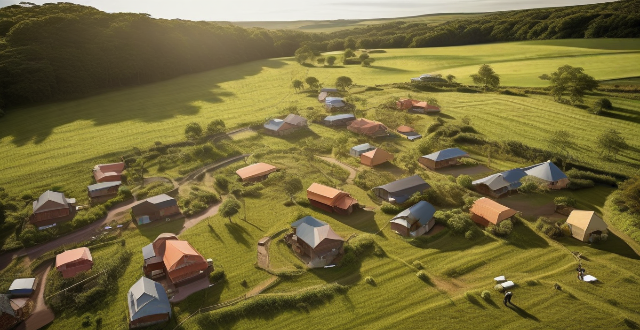
How can sustainable tourism help mitigate climate change ?
Sustainable tourism can help mitigate climate change by reducing carbon emissions, promoting conservation, supporting local communities, educating travelers, and restoring degraded lands. It encourages low-carbon transportation, eco-friendly accommodations, protected areas, wildlife conservation, local employment, local products and services, awareness raising, cultural exchange, minimizing plastic use, waste management, reforestation projects, and eco-agriculture.

What are the best destinations for a family vacation ?
When planning a family vacation, there are several factors to consider. These include the interests of all family members, the budget, and the type of experience you want to have. Here are some of the best destinations for a family vacation: Disney World is one of the most popular family vacation destinations in the world. It offers something for everyone, including thrilling rides, character meet-and-greets, and live shows. There are four theme parks, two water parks, and several resorts to choose from. Yellowstone National Park is a great destination for families who love the outdoors. The park has plenty of hiking trails, scenic drives, and opportunities to see wildlife like bison, elk, and bears. There are also campgrounds and lodges available for overnight stays. New York City is an exciting destination for families who want to experience urban life. There are plenty of attractions such as museums, theaters, and landmarks like the Statue of Liberty and Central Park. There are also many restaurants and shopping options available. The Hawaiian Islands offer a tropical paradise for families looking for relaxation and adventure. There are plenty of beaches, hiking trails, and water sports activities available. Families can also learn about Hawaiian culture through visits to historical sites and festivals. San Diego is a great destination for families who want a mix of city life and beach relaxation. The city has several attractions like the San Diego Zoo, SeaWorld, and Legoland. There are also plenty of beaches and parks for outdoor activities.

How do public health policies influence the design and accessibility of parks and recreational facilities ?
Public health policies significantly influence the design and accessibility of parks, aiming to promote physical activity, reduce sedentary behavior, and improve overall health outcomes. Key strategies include promoting walking paths, cycling lanes, fitness equipment, sports facilities, natural landscapes, outdoor seating, interactive features, stress reduction, social interaction, environmental benefits, accessible pathways, ramps, braille signage, and inclusive play areas. These policies contribute to creating parks that support the well-being of individuals and communities alike.

What are the best travel destinations for families with young children ?
Traveling with young children can be a rewarding experience, but it's important to choose destinations that cater to the needs and interests of both kids and adults. Here are some of the best travel destinations for families with young children: 1. Disney World, Florida - an iconic family vacation destination that offers something for everyone. With four parks and two water parks, there's no shortage of fun activities for kids of all ages. From meeting beloved characters like Mickey Mouse and Elsa from Frozen to thrilling rides like Space Mountain and Tower of Terror, Disney World has it all. 2. San Diego, California - a great destination for families with young children because of its mild climate and abundance of kid-friendly attractions. The San Diego Zoo is a must-visit, as well as the nearby Legoland theme park. Other popular attractions include the beachfront boardwalk in Mission Beach and the interactive museum at the Fleet Science Center. 3. Yellowstone National Park, Wyoming/Montana/Idaho - For families who enjoy outdoor adventures, Yellowstone National Park is a fantastic destination. With its stunning natural beauty, wildlife viewing opportunities, and geothermal wonders like Old Faithful, Yellowstone is a great place to introduce kids to nature and conservation. There are also plenty of hiking trails and ranger-led programs that are perfect for families with young children. 4. New York City, New York - may not seem like an obvious choice for families with young children, but there are plenty of kid-friendly attractions in this bustling metropolis. Visit the American Museum of Natural History or the Children's Museum of Manhattan for educational fun, take a ferry ride to see the Statue of Liberty, or catch a Broadway show designed specifically for kids. And don't forget about Central Park – it's an oasis in the heart of the city where kids can run around and play while parents relax on the grassy lawns. 5. Hawaii - is a paradise that offers something for everyone in the family. With its warm weather and beautiful beaches, it's the perfect place to relax and unwind. But there are also plenty of adventurous activities like surfing lessons, snorkeling excursions, and hiking trails that will keep kids entertained. Plus, Hawaiian culture is rich and unique, offering opportunities for families to learn about local traditions and history.